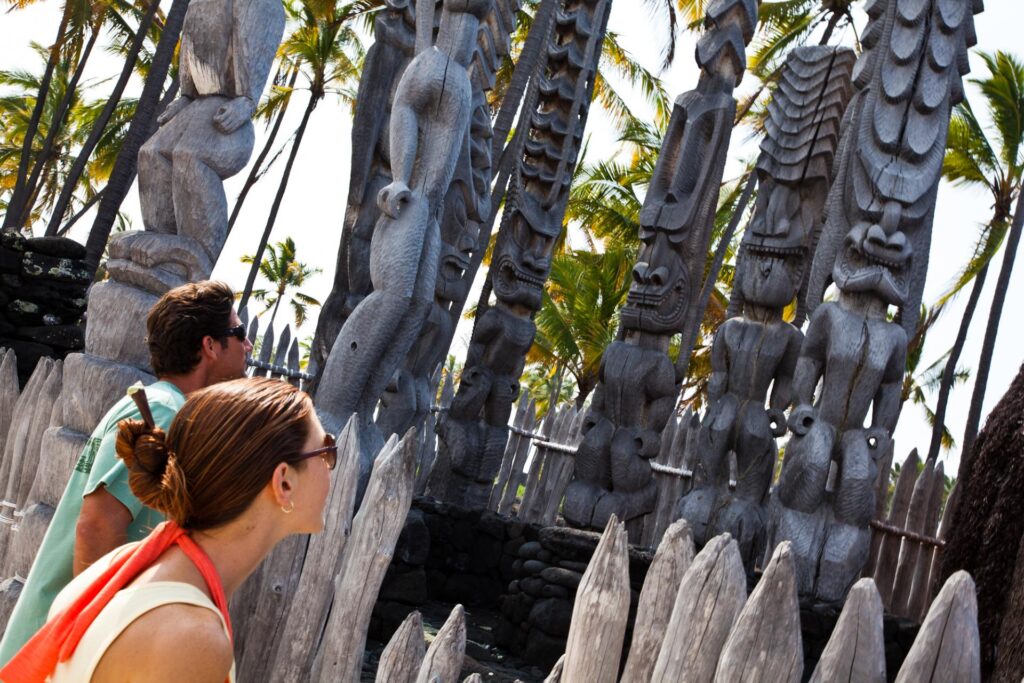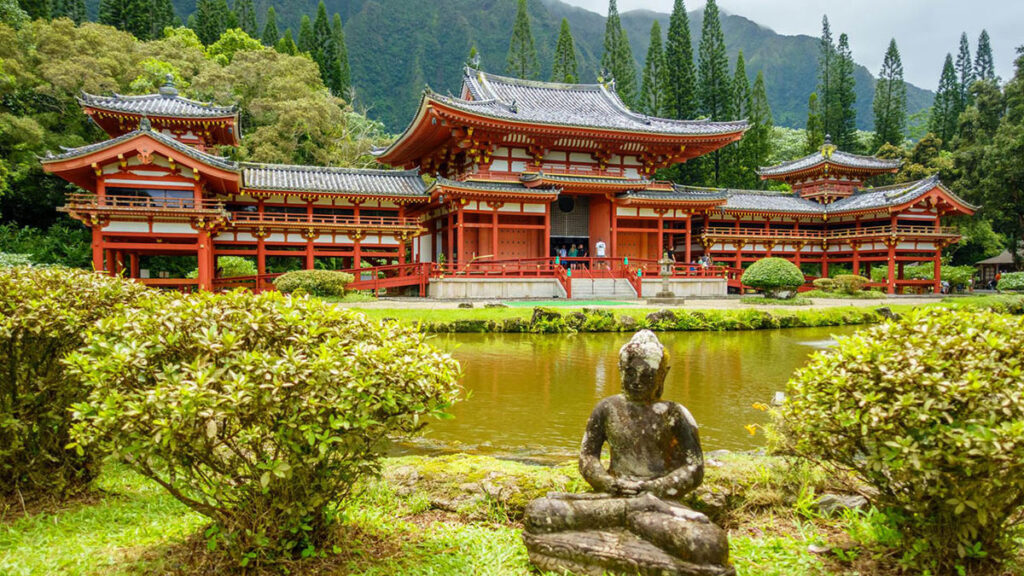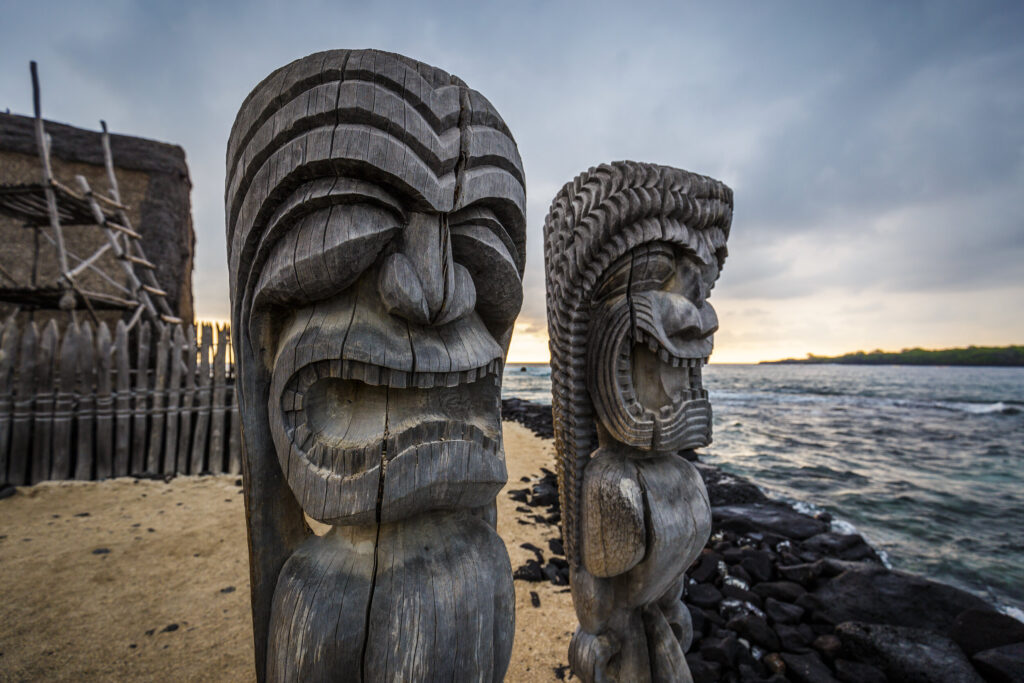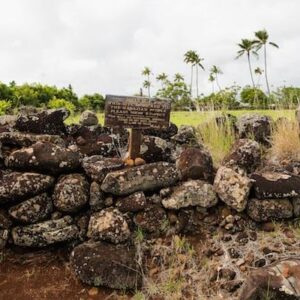If you have ever wondered about the enchanting ancient Hawaiian temples and yearned to immerse yourself in their rich cultural heritage, look no further. Here, you will discover the perfect destinations where you can take captivating cultural tours to explore these awe-inspiring architectural wonders. Delve into the mystical ambiance of Hawaii as you embark on a journey that will transport you back in time, allowing you to witness the fascinating rituals and learn about the vibrant history that shaped this magnificent land. Get ready to create memories that will leave you with a deeper appreciation for the ancient Hawaiian civilization.
Cultural Tours in Hawaii
Best Cultural Tours in Hawaii
If you’re looking to delve into the rich history and vibrant culture of Hawaii, taking a cultural tour is an excellent way to explore ancient Hawaiian temples. These tours offer a unique opportunity to learn about the significance of these temples and gain a deeper understanding of Hawaiian traditions. Whether you prefer a guided tour or a self-guided adventure, Hawaii has a variety of options that cater to different interests and preferences.
What to Expect on a Cultural Tour in Hawaii
When you embark on a cultural tour in Hawaii, you can expect an enriching and educational experience. These tours usually provide insights into the history, customs, and traditions of ancient Hawaiian temples. Knowledgeable guides or informative resources will accompany you throughout the tour, sharing fascinating facts and stories about the temples and their cultural significance. You will also have the chance to witness breathtaking landscapes and immerse yourself in the unique sights and sounds of Hawaii.
Ancient Hawaiian Temples
Importance and History of Ancient Hawaiian Temples
Ancient Hawaiian temples, known as heiaus, hold immense cultural and historical significance for the Hawaiian people. These structures served as places of worship, offering a connection to the spiritual realm and serving as focal points for Hawaiian religious ceremonies. The temples were also important social and political gathering places, where chiefs and priests made important decisions for their communities.
The history of ancient Hawaiian temples can be traced back thousands of years. Constructed using a combination of stone, coral, and local plants, these temples were feats of engineering and craftsmanship. Each temple was built to honor a specific deity or fulfill a particular purpose, such as fertility, agriculture, or protection. Over time, these temples became sacred sites where the bond between the Hawaiian people and their land was nurtured.
Types of Ancient Hawaiian Temples
Ancient Hawaiian temples can be categorized into different types based on their purpose and structure. Among the most common types are:
-
Heiau Kuula: These temples were dedicated to the Hawaiian god of fishing, Kuula. Here, fishermen would seek blessings and guidance before embarking on their fishing expeditions, hoping for a fruitful catch.
-
Heiau Luakini: These were the largest and most sacred temples, reserved for religious ceremonies and human sacrifices. Luakini temples were dedicated to the war god, Ku, and were only accessible to the highest-ranking chiefs and priests.
-
Heiau Kolea: These temples were associated with healing and were often built near the ocean. They provided a sacred space for Hawaiians to seek physical and spiritual healing, using medicinal plants, chants, and rituals.
-
Heiau Puuhonua: Puuhonua temples were places of refuge where people seeking forgiveness or protection could find sanctuary. Those who broke the sacred laws, or Kapu, would come to these temples to receive absolution and a chance to start anew.

Explore Uncharted Hawaiian Destinations
Popular Ancient Hawaiian Temple Sites
Puʻukoholā Heiau National Historic Site
Puʻukoholā Heiau is one of the most significant ancient Hawaiian temple sites in Hawaii. Located on the Big Island, it was built by King Kamehameha I in the late 18th century as a place of worship and to fulfill a prophecy regarding the unification of the Hawaiian Islands. Today, visitors can explore the temple grounds and gain insights into the history and culture of ancient Hawaii.
Hale O Keawe Heiau
Situated within the Puʻuhonua o Hōnaunau National Historical Park on the Big Island, Hale O Keawe Heiau is considered a sacred burial ground for Hawaiian royalty. It is believed to house the remains of chiefs and other esteemed individuals. Tourists can learn about Hawaiian funeral customs and pay respects to the ancestors at this historically significant site.
Keʻekū Heiau
Keʻekū Heiau, located on the rugged coastline of Maui, is a remarkable temple site that offers stunning ocean views and a glimpse into ancient Hawaiian rituals. This temple is associated with healing and was a place where Hawaiians sought remedies for various ailments. Exploring Keʻekū Heiau allows visitors to connect with the spiritual practices and traditions of old Hawaii.
Kīlauea Point National Wildlife Refuge
While primarily known for its diverse wildlife, the Kīlauea Point National Wildlife Refuge on Kauai also encompasses an ancient Hawaiian temple known as Kaʻahumanu Heiau. The temple provides a fascinating insight into the cultural and spiritual importance of the area, offering visitors a chance to learn about the Hawaiian people’s deep connection to their environment.
Mookini Heiau
Set on the northern coast of Hawaii Island, Mookini Heiau has a unique historical significance as one of the oldest temples in the entire state. Built around 480 A.D., this temple served as a ceremonial site and played an integral role in the lives of the Hawaiian people. Today, visitors can admire the temple’s impressive architecture and reflect on the ancient traditions and practices it represents.
Wailua River State Park
Wailua River State Park on Kauai is home to several ancient Hawaiian temple sites. One notable temple is the Hikinaakala Heiau, dedicated to the rising sun. Visitors can venture into the lush surroundings of the park and explore the remains of these ancient structures, experiencing the peaceful and sacred atmosphere that once prevailed.
Guided Cultural Tours to Ancient Hawaiian Temples
The Bishop Museum
One of the most renowned cultural institutions in Hawaii, The Bishop Museum in Honolulu offers guided cultural tours that provide a comprehensive understanding of ancient Hawaiian temples. With knowledgeable guides leading the way, visitors can explore the museum’s extensive collection of artifacts and exhibits, gaining insights into Hawaiian history, customs, and the significance of these temples. The Bishop Museum is truly a must-visit destination for those seeking a deeper appreciation for Hawaiian culture.
Waikiki Hawaiian Culture Walking Tour
For those looking to combine a cultural tour with the beauty of Waikiki, the Waikiki Hawaiian Culture Walking Tour is an ideal choice. Led by local experts, this guided tour takes participants on a fascinating journey through the history and culture of ancient Hawaiian temples. Visit important temple sites, learn traditional chants and dances, and immerse yourself in the vibrant Hawaiian culture.
Waimānalo Hawaiian Homestead Tour
Experience the authentic cultural heritage of Waimānalo on Oahu with a guided tour of the Waimānalo Hawaiian Homestead. Led by community members, this tour offers a unique glimpse into the daily lives and traditions of native Hawaiians. Visitors will have the opportunity to visit ancient temple sites and participate in hands-on activities, such as lei-making and traditional cooking. It’s a fantastic way to engage with the local community and gain a deeper understanding of the cultural significance of these temples.
Polynesian Cultural Center
Located on the North Shore of Oahu, the Polynesian Cultural Center is a hub of cultural activities and performances. As part of their comprehensive cultural experience, the center offers guided tours that showcase ancient Hawaiian temples and provide insights into traditional practices. Visitors can witness captivating shows, explore authentic temple replicas, and engage with cultural practitioners who share their knowledge and stories.
Pearl Harbor and USS Arizona Memorial
While primarily known for its historical significance in relation to World War II, Pearl Harbor and the USS Arizona Memorial also offer opportunities to learn about ancient Hawaiian temples. Guided tours of the Pearl Harbor Visitor Center often include a visit to the nearby ancient Hawaiian temple sites, where visitors can learn about the spiritual connection Hawaiians have to the land, even amidst a more recent history of conflict.

Plan Your Dream Hawaiian Getaway
Self-Guided Cultural Tours to Ancient Hawaiian Temples
Big Island Self-Guided Temple Tour
For those who prefer a more independent exploration, a self-guided temple tour on the Big Island is an excellent choice. With the help of detailed maps and resources, visitors can uncover the ancient temple sites at their own pace. Explore the mystical aura of Puʻukoholā Heiau National Historic Site, hike to smaller temple sites hidden in lush forests, and immerse yourself in the rich history and natural beauty that surrounds these sacred places.
Kauai Self-Guided Temple Tour
Kauai’s stunning landscapes and laid-back atmosphere create a perfect backdrop for a self-guided temple tour. With maps and informational materials readily available, visitors can venture into the island’s remote areas to discover hidden temple sites and experience the tranquility that these sacred grounds offer. Be sure to visit the temple sites within Wailua River State Park and connect with the spiritual heritage that has shaped the island’s history.
Oahu Self-Guided Temple Tour
Oahu’s vibrant city life and historic landmarks make it an exciting destination for a self-guided temple tour. Set out on foot or by rental car, armed with maps and guidebooks, to embark on an adventure through the island’s fascinating history. Discover temples tucked away in rural areas, explore ancient heiaus within bustling city limits, and find solace in the peaceful ambiance of these sacred sites.
Maui Self-Guided Temple Tour
Maui’s mix of stunning beaches and lush landscapes sets the stage for an unforgettable self-guided temple tour. Guided by informative materials, visitors can explore the enchanting ancient sites scattered across the island. Discover the healing powers of Keʻekū Heiau, witness the remnants of once-great temples framed by breathtaking coastal views, and embrace the mana, or spiritual power, that emanates from these ancient grounds.
Organizing Your Cultural Tour
Booking a Guided Tour
When planning your cultural tour to visit ancient Hawaiian temples, booking a guided tour provides several advantages. Guided tours often provide a more comprehensive and structured experience, with knowledgeable guides who can offer detailed insights and answer any questions that may arise. The convenience of having transportation arranged, along with scheduled stops and activities, allows for a seamless and stress-free exploration of these ancient sites. Additionally, many guided tours provide opportunities to interact with cultural practitioners, providing a deeper understanding of Hawaiian traditions and customs.
Planning Your Self-Guided Tour
If you prefer a more flexible and independent experience, planning a self-guided tour allows you to explore at your own pace and tailor your journey to your interests. Start by gathering information about the temple sites you wish to visit, including their locations, accessibility, and any specific protocols or cultural practices to observe. Using maps and resources, create an itinerary that covers your desired temples, ensuring you allocate enough time to fully appreciate each site. Be mindful of any dietary restrictions, cultural etiquette, and safety precautions when planning your self-guided tour.
Maps and Resources for Self-Guided Tours
To navigate your self-guided cultural tour to ancient Hawaiian temples, having access to detailed maps and resources is crucial. Numerous guidebooks, websites, and mobile applications provide comprehensive information about temple sites, their historical backgrounds, and practical tips for visiting. These resources often include maps, directions, and suggested itineraries to make your exploration smooth and informative. Utilize these tools to maximize your understanding and appreciation of the ancient Hawaiian temples you plan to visit.

Experience Hawaii’s Unique Attractions
Respecting and Preserving Ancient Hawaiian Temples
Cultural Etiquette
When visiting ancient Hawaiian temples, it is essential to respect the cultural and spiritual significance of these sacred sites. Adhering to the following cultural etiquette guidelines will help ensure that these temples are preserved and respected:
- Remove your shoes before entering temple areas to show reverence and keep these sacred spaces clean.
- Avoid touching or climbing on any structures or artifacts within the temple sites.
- Refrain from taking anything from the sites, including rocks or vegetation, as they hold spiritual importance.
- Observe the posted signs and regulations provided by the temple site management.
By following these cultural etiquette practices, you can contribute to the preservation and protection of these ancient Hawaiian temples for future generations.
Leave No Trace Principles
To preserve the natural environment surrounding ancient Hawaiian temples, it is important to adhere to the Leave No Trace principles:
-
Plan ahead and prepare: Research the temple sites you plan to visit, understanding their regulations and potential impacts. Carry any necessary supplies, such as water, snacks, and appropriate clothing, to minimize your impact on the environment.
-
Travel and camp on durable surfaces: Stick to designated paths and trails to avoid damaging the surrounding vegetation or wildlife habitats. Camp only in designated areas, leaving the natural areas undisturbed.
-
Dispose of waste properly: Pack out any trash or waste and dispose of it in proper receptacles. Avoid leaving behind any food waste, as it can harm wildlife and disrupt the fragile ecosystem surrounding the temples.
-
Leave what you find: Refrain from taking anything from the temple sites, including rocks, shells, or artifacts. Leave the natural and cultural resources untouched for others to appreciate.
-
Respect wildlife: Observe wildlife from a safe distance and avoid feeding or touching them. Respect their natural behavior and habitats, allowing them to thrive undisturbed.
-
Be considerate of other visitors: Keep noise levels low and be mindful of other visitors who may be seeking a peaceful and contemplative experience. Respect their privacy and personal space while exploring the temple sites.
By following these Leave No Trace principles, you can help protect the fragile ecosystems and cultural heritage associated with ancient Hawaiian temples.
Learning From Cultural Practitioners
Learning from cultural practitioners is an invaluable way to deepen your understanding of ancient Hawaiian temples and their cultural significance. Seek out opportunities to engage with experts, such as local guides or members of the Hawaiian community, who can provide first-hand knowledge and insights. Attend cultural workshops, performances, or demonstrations to learn about traditional practices, crafts, and storytelling. Listening to the wisdom and experiences of cultural practitioners will offer a unique perspective and enhance your cultural tour experience.
Conclusion
Embarking on a cultural tour to visit ancient Hawaiian temples allows you to immerse yourself in the rich and vibrant heritage of Hawaii. Whether you choose a guided tour or prefer the freedom of a self-guided exploration, there are numerous options available to cater to your interests and preferences. As you learn about the importance and history of these temples, visit popular temple sites, and plan your tour, remember to respect and preserve these sacred grounds. By adhering to cultural etiquette, practicing Leave No Trace principles, and engaging with cultural practitioners, you can ensure that these ancient Hawaiian temples continue to inspire and educate for generations to come. So, pack your curiosity, open your heart to the aloha spirit, and embark on a cultural journey to the ancient Hawaiian temples of Hawaii.
